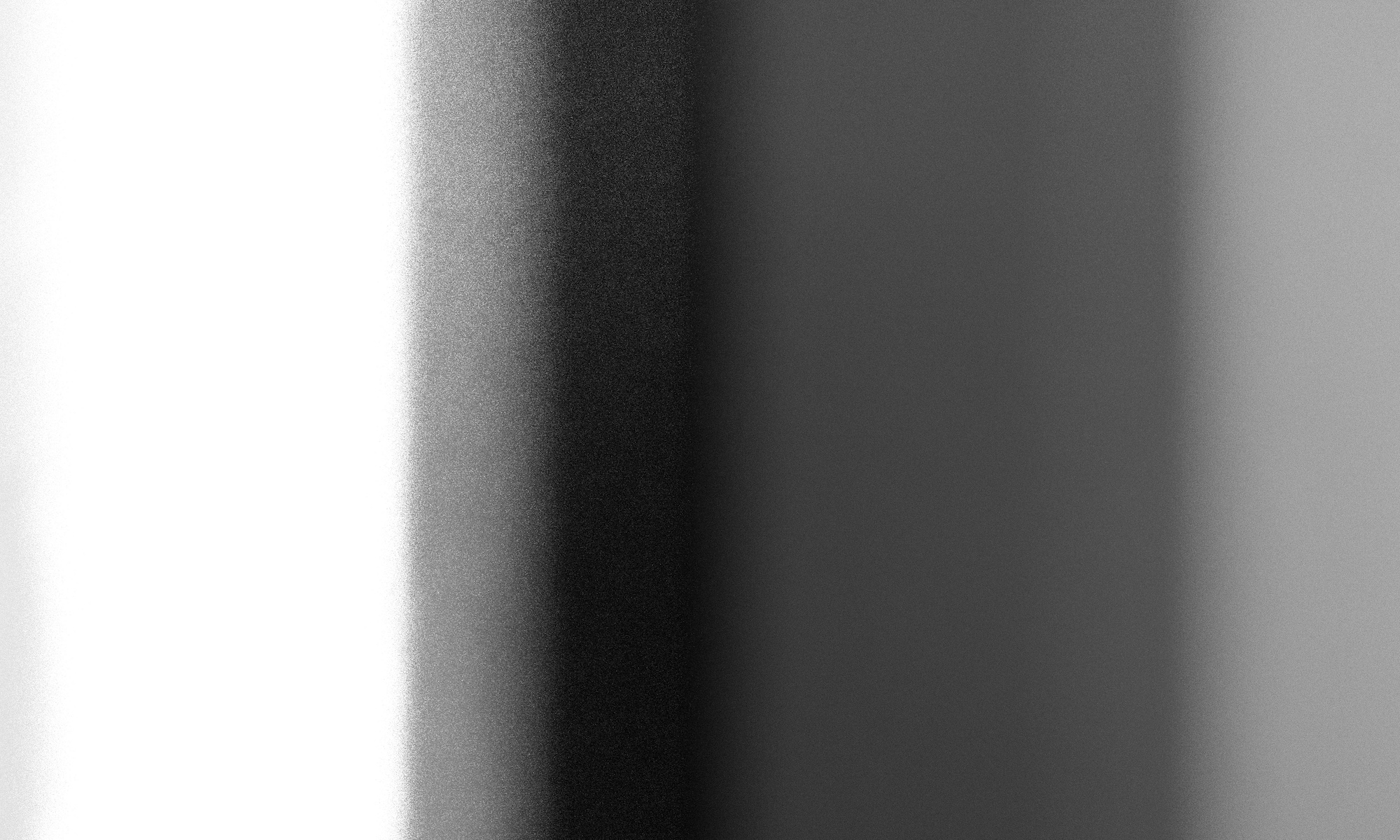A quick catch up on where I am, in practical terms, with the various strands of my project.
1. Community engagement with urban regeneration
This is the focus of my research proposal for the FMP. Building networks, contacts and relationships is core to the development of the work. This is focusing on two areas.
(i) Barking and Dagenham.
I have been making images to feed into an image bank for the Thames Ward Community Project (TWCP). My images of the Barking Riverside development were used in a presentation at the recent TWCP summit (at which the CEO of the development company, the Bishop of Barking, a local headteacher, the leader of the residents association and the local councilor spoke). I took photographs of the event and have added these to the TWCP repository. This contributes to the component of the project concerned with collaborative creation of images for advocacy.
I am working with a local arts project (ShedLife), and have an exhibition of portraits and other images of the participants to accompany a showing of the film ‘A Northern Soul’ and Q&A with the filmmaker (Sean McAllister) at the project on 27th March. The project also involves supporting young adults who are documenting the process and working with participants’ photographs and their own image making, which contributes to the component of the project concerned with working with images to gain mutual insight into and understanding of the lifeworlds of the residents.
Through the project, I am now also in touch with the Barking Creekmouth Preservation Society, the Barking Heritage Group, Thames View Community Gardeners and residents on the Gascoigne Estate. The work in Barking has contributed to the development of all three levels of my project work, and provides lots of opportunities for development at the FMP stage. I also want to open up the use of the local authority archives at Valence House and the use of images in community mapping by JustMap.
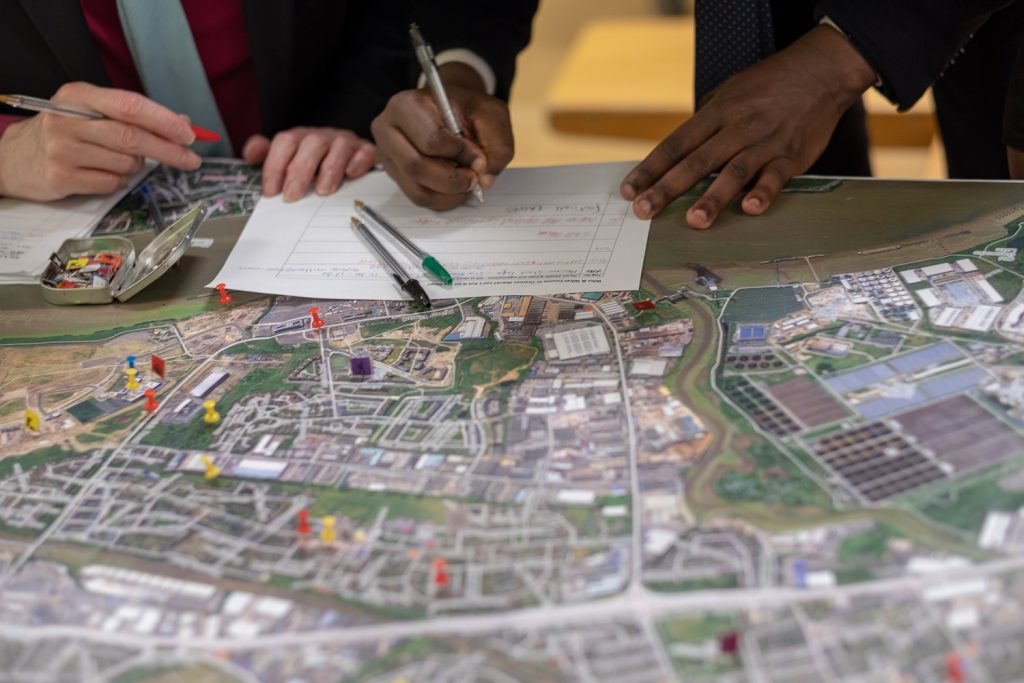
(ii) Stratford Olympic Park.
In addition to being a member of the London Prosperity Board, I am now an invited member of the EAST Education Leadership Group. This gives me direct insight into and involvement with the development of initiatives on and around the Olympic Park. In relation to image making, I am putting this on hold for the moment. I’ll continue to form links and networks to keep open the option to carry out the final project in this area. Chairing discussions at the Creating Connections East meetings has helped me to form links with community groups across the four boroughs surrounding the Olympic Park. I’ve also met with people on the Carpenters Estate through the ESRC Displacement Project, and with people organising arts related aspects of the project (principally to ensure that there is no confusion between my own work on the estates and their work – I’ll write more about community arts initiatives related to research and to urban development in a later post).
2. Object Lessons
I’ve continued to attend the weekly lectures and take part in the workshops. The students are now working in groups to produce online exhibitions based around different kinds of objects. They will present these at an all-day workshop on 22nd March. I have spoken to the course team about making images with the students and their objects in the various collections participating in the programme. The major contribution to my work, however, has been the focus of the programme on objects, which fits with the more materialist turn in my own work, and interest in artists like Cornelia Parker, and writers such as Peter Stallybrass (for example, Stallybrass, 1998) concerned with memory and materiality (see, in particular, Freeman, Nienass & Daneill, 2016). The programme has focused on the narratives that can be created around objects, and the value of objects in well-being and therapy (Solway et al, 2017). There is also, however, a growing contemporary theoretical interest in the disruptive and obstructive function of objects, and our projection of agency into the material world, creating ‘uncanny objects’ with an apparent agency and insistence, and resistance, of their own.
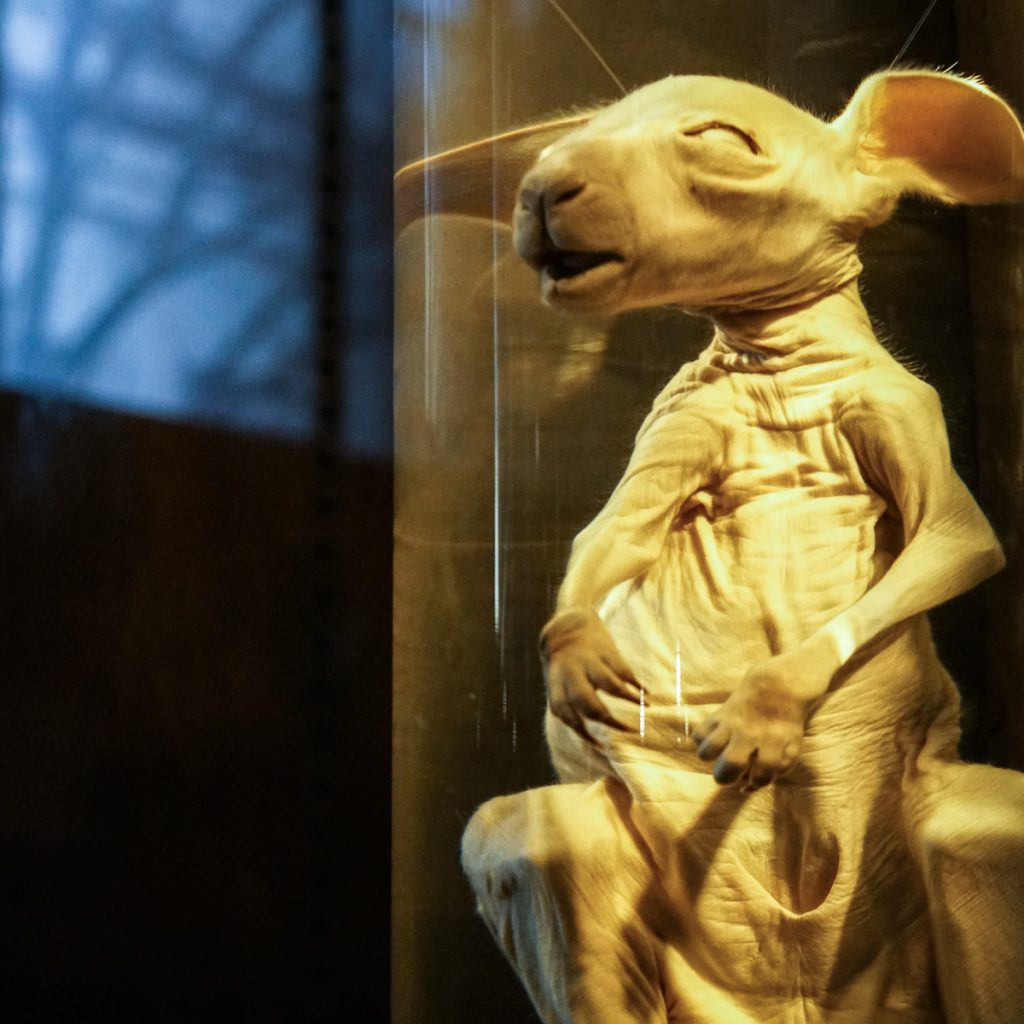
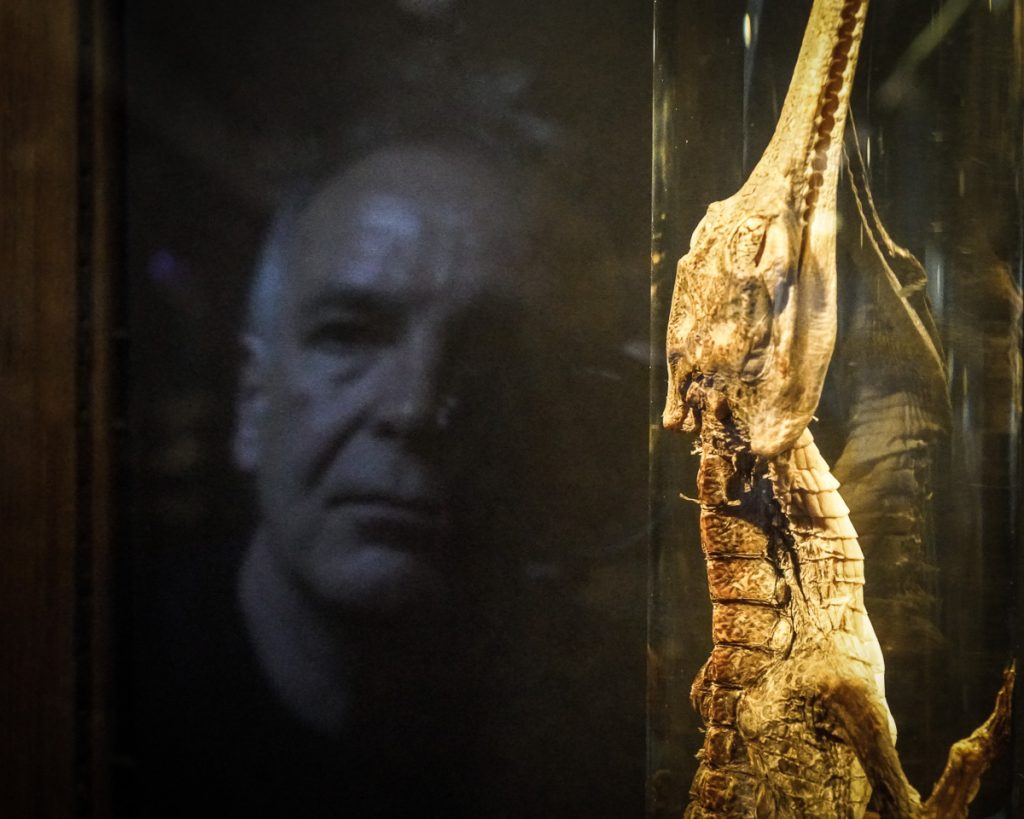
I am thinking about ways of using the collections, for instance the zoological collection at the Grant Museum (created to provide ‘artifacts’ for teaching and research in the Nineteenth Century but fulfilling a very different function now) in exploring these issues, and the role played by the collections in the emergence of eugenics and other oppressive regimes of thought.
The ‘uncanny object’ in a later era is explored by Lisa Mullen (2019), in ‘Mid-century Gothic’.
‘Mid-Century Gothic defines a distinct post-war literary and cultural moment in Britain, lasting ten years from 1945-55. This was a decade haunted by the trauma of fascism and war, but equally uneasy about the new norms of peacetime and the resurgence of commodity culture. As old assumptions about the primacy of the human subject became increasingly uneasy, culture answered with gothic narratives that reflected two troubling qualities of the new objects of modernity: their uncannily autonomous agency, and their disquieting intimacy with the reified human body’.
This opens up new visual possibilities in exploring the relationship between the students and the objects they have studied.
This work has influenced all other aspects of my photographic work, and, in particular, treatment of images, in print form (and also, maybe, in materialised form on a smartphone screen), as material objects. In the other projects I am exploring this, and the form that my own ‘images’ will take, and how they will be circulated and encountered (for instance, made material as different kinds of prints, as books, as artifacts, in exhibition space and so on).
3. Digital Discrimination
This is a project looking at the relationship between location and quality of internet access, the uses that young people make of the internet and the manner in which advertising algorithms feed young people in different areas with different kinds of content. The project is running in Germany and the UK. I have been making images alongside colleagues who are collecting data through surveys, focus groups and mapping. Early days in terms of seeing where this might go visually. Recent interviews in Hull indicate that there might be potential in exploring the ‘layering’ of the located embodied lives of young adults and their virtual lives online (predominantly through their phones).
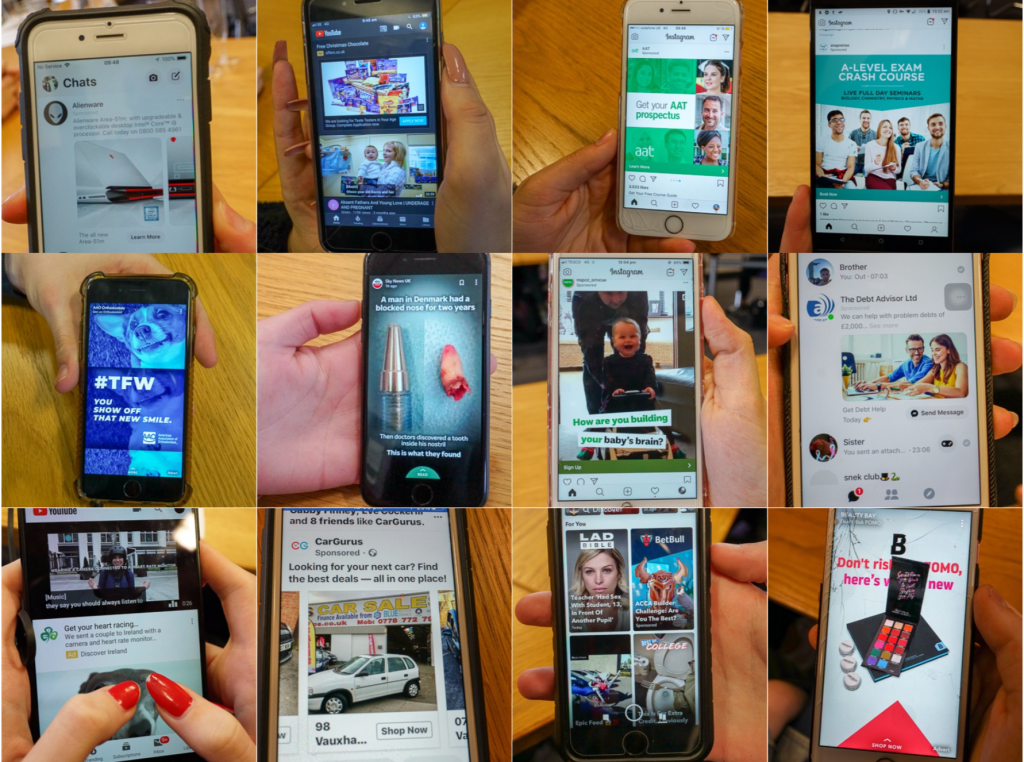
In relatively poor areas there appears to be a possible interaction between the decaying physical infrastructure (public transport, for instance) and an increasingly complex, and differentiated and disempowering, online world (with snapchat and instagram being used as the dominant means of communication, bringing commercial competition for users’ online attention, but in demographically differentiated ways, driven by algorithms that appear to have a locational component, as well as being shaped by usage).
References
Freeman, L. A., Nienass, B. and Daniell, R. 2016. ‘Memory | Materiality | Sensuality’, Memory Studies, 9(1): 3–12.
Mullen, L. 2019. Mid-century gothic: The uncanny objects of modernity in British literature and culture after the Second World War. Manchester: Manchester University Press.
Solway, R. et al. 2017. ‘Material objects and psychological theory : A conceptual literature review’, Arts & Health. Taylor & Francis, 8(1): 82–101.
Stallybrass, P. 1998. ‘Marx’s coat’, in P. Spyer (ed.), Border fetishisms: material objects in unstable spaces. London: Routledge. 187–207.
